To run the forums, host the website, and travel, I charge a universal service fee for my reviews. This review was sponsored by PEGASUS North America. My goal is to be transparent and unbiased, this video and written review are not meant to be an endorsement of PEGASUS products.
For the 2019 season, PEGASUS is introducing three electric bicycle models into the North American Market. The PREMIO SPORT is their entry-level offering in terms of price, but it still comes decked out with everything you’d need for commuting, dealing with rain, and riding at night. Just like the E8 model, the Sport comes with a Shimano NEXUS INTER-8 internally geared hub drivetrain. This hub provides 307-degrees of gear ratio, slightly less than the 360-degrees offered by the NuVinci N360 on the PREMIO Nu, but more than enough for neighborhood and urban riding or commuting. It pedals efficiently, weighs a bit less, and can still be shifted at standstill. I had no problem ascending the steeper hills in Ranchos Palos Verdes, a fancy Southern California neighborhood where this review was filmed. The INTER-8 weighs about four pounds vs. five and a half for NuVinci, and because the PREMIO SPORT uses the older plastic-encased PowerPack 500 battery vs. the new PowerTube, the overall weight of the bike is considerably less at ~57.5lbs vs. 63.9lbs, depending on the frame style and size you get. There are four frame sizes to choose from and three styles (high-step, mid-step, and step-thru), so the bike can be extremely approachable if you’ve got knee or hip sensitivity when mounting. Note that the wave step-thru frame, shown in the photos and most of the video above, tends to be less stiff than the mid-step or high-step, but is also the easiest to mount. This frame might introduce speed wobble and frame flex when loaded with cargo or ridden by heavier users. I did notice that PEGASUS reinforced the frame near the downtube with additional aluminum alloy gussets to make it performant. Once you’re on the bike and riding, everything feels intuitive and my experience with the components (which I’ve also covered on competing ebike products) is that they are durable. Anytime you stop, just twist the half-grip shifter down to a lower gear to make pedaling from standstill easy. As you begin again, and start to gather speed, you can reduce the power level of the motor by clicking through the four assist levels using the control pad on the left. The motor is smooth and quiet, more so than the sportier Performance Line CX drive unit on the PREMIO Nu. The drivetrain isn’t as quiet or durable as the Gates Carbon belt used on the PREMIO E8 and Nu, but it’s actually more durable than it would be if used with a traditional cassette and derailleur. As shown in the video above, there isn’t much slack in the chain because the Shimano Nexus INTER-8 is internally geared, so the chain won’t bounce around or fall off as easily, and there’s no derailleur hanging down to get bumped at bike racks. Your pants or dress will be protected from the chain by a plastic chain cover. The full length fenders complete the package, but do produce a bit of rattling noise when riding across rough terrain. For those who want a trouble free and quiet drivetrain, this is a great setup. The Bosch motor, battery, and display panel are renowned for being reliable and they compliment the puncture resistant tires, and easy to use hydraulic disc brakes. Compared to the PREMIO E8, which uses hydraulic rim brakes, the disc brakes here aren’t quite as protected if from bumps at crowded bike racks. Be careful not to touch or bend the disc brake rotors, or you might notice some scraping and squealing noises as you ride. Still, the adjustable-reach brake levers and quality Shimano hardware should be easy to engage with and hold up well over time. For roughly $100 less than the PEGASUS PREMIO E8 and $1,100 less than the Nu, this model provides a great ride experience, and I like the highly visible white color scheme. Sure, the battery isn’t mounted internally, but it and all of the cables and accessories match in black and weight is still positioned low and center for optimal balance and handling.
Driving the PEGASUS PREMIO SPORT is a planetary geared mid-drive motor called the Bosch Active Line Plus. It weighs about one and a half pounds less than the Performance Line motors, is more compact in size (hiding behind the chainring beautifully here), and operates without producing as much noise. It’s a good fit for neighborhood, urban, commuting applications and still offers higher 105 rotations per minute pedal support vs. just 100 from the entry-level Bosch Active Line motor. You get slightly less torque than the Performance Line motors however, about 50 Newton meters peak, but the internally geared Shimano INTER-8 hub lets you leverage the power instantly with anytime shifting. If you simply ease off of the pedals, or stop for a moment and shift down, the lower gears will allow you take full advantage of the 50 newton meters and climb very steep hills. In my opinion, this motor compliments the relaxed geometry and urban setup of this electric bike. All Bosch mid-drive units offer shift detection, to reduce mashing and drivetrain wear, and this feature works with the INTER-8 internally geared hub as well. The motor controller measures rear wheel speed, pedal cadence, and pedal torque, over 1,000 times per second. I’m told that it listens for actual pedal pressure and is able to separate that out from shifting pressure on the fly. This motor also uses a traditionally sized 38-tooth belt ring vs. the smaller proprietary sprocket on the Performance Line motors, which rely on a reduction gear that introduces some friction when pedaling unpowered or above the 20 mph top assisted speed. In short, even though this is the less expensive, less powerful motor, it actually performs quite well and delivers a few unique advantages. I noticed that it started and stopped very quickly during the ride tests and was able to pedal backwards, actually feeding the chain in reverse, which can be useful for drivetrain adjustment and servicing. There is however, a bit of a clunk feeling that happens when you stop pedaling forward abruptly with high levels of motor support, it’s like the motor doesn’t ease out as smoothly… but at least it happens fast. For more information on this ebike motor, I’ve created a stand-alone Bosch Active Line Plus review in the EBR forums.
Powering the bike is a high-capacity Bosch PowerPack 500. This battery offers 36 volts and 13.4 amp hours for nearly 500 watt hours of capacity, which I’d call average for the current generation of electric bikes. It’s one of the most widespread electric bike battery designs in the world right now, and uses the same form factor and mounting interface as the older, lower capacity, Bosch PowerPack 400. This means that finding replacements, borrowing additional packs, or renting packs when traveling, becomes much easier. The plastic casing is durable but lightweight, especially compared to the new PowerTube 500, which weighs ~6.2 lbs verses ~5.7 lbs here. PowerPack batteries do stand out a bit visually because they mount on top of the frame tubing, but PEGASUS has done their best to keep this weight low and position the battery out of the way for mounting. It’s neat that despite having an external battery pack, the frames still had room for bottle cage bosses! There’s a lot of room on this bike for carrying cargo, because of the premium rear rack. This could be used to transport the battery charger, an additional battery pack (PowerPack 400 or 500), and work gear or groceries. The bike is incredibly versatile in this way, and I love that the rack even comes with a mini pump built in. Anyway, the battery pack clicks down and secures with a high quality locking core. You can mount the battery without using the keyed lock, just be sure to push all the way until you hear it click. PEGASUS dealers (and really any Bosch certified ebike dealer) can help you adjust the mounting interface over time if you notice rattling or loosening, it’s a sturdy, long-lasting, proven design. And, that goes for the charger as well. With half a kilowatt-hour of capacity in this battery, it’s nice that they include the faster 4 amp charger, so you can get back out there riding more quickly. I like the wide proprietary plug design of this charger, which isn’t likely to be mixed up with other chargers or get broken as easily if you step on it or snag it. You can charge this battery on or off the bike frame, making it great for commuters who need to charge inside at work, and you won’t be as likely to drop the battery during transport because it has a big plastic loop handle at the top. To maximize the life of this and most Lithium-ion battery packs, try to keep it above 20% capacity and avoid extreme heat and cold. As with the motor, I’ve created a stand alone Bosch PowerPack 500 review in the EBR forums so you can see different implementations and get more specific details.
Activating the drive systems on this ebike is fairly straightforward. You charge and mount the battery then press the power button on the top edge of the little display panel, which is mounted within reach of the left grip. This is the Bosch Purion display, one of the nicer compact offerings on the market right now. It cannot be swiveled to reduce glare easily, is not removable for protection, does not show as many menus, and does not have an active Micro-USB charging port like the larger Bosch Intuvia display. However, it does keep the handlebars open, and may not get damaged as easily if the bike tips or is parked at a crowded rack. Even though the display is a bit smaller than some competing models, it’s intuitive enough that you might not look down that often to read it. I have grown to accept the Purion, but do have a few tips for use as follows. The + and – buttons, which raise and lower assistance, are designed to click in at an angle towards the right. They are attached near the left edge of the control pad and pivot in towards the LCD. With practice, I have found that the right edge is really the sweet spot for consistent clicking. Sometimes the lower left and middle areas can be inconsistent or non-responsive. The screen itself glows faint white at all times, which shouldn’t draw much power. Holding the + button will turn the lights on and off, and that’s the one little secret that is worth remembering. By comparison, the larger Bosch Intuvia display has a dedicated light button. Holding the – button will cycle through trip distance, odometer, assist level, and range. And, the range menu is dynamic, so you can see the bike calculate how far it thinks you can go before the battery completely drains based on the last mile of riding, your current state of charge, and the chosen level of assist. This helps to make up for the very basic 5-bar charge indicator on the left side of the battery and the display which isn’t as precise as a 10-bar or percentage readout seen on some competing displays. On the lower edge of the control pad is a walk-mode button. Press it once and then hold the + button to have the motor slowly assist you when walking the bike (you must be in Eco, Tour, Sport, or Boost for walk mode to work). It’s useful for crowded non-bikeable areas like parks, or if you get a flat tire, and not all companies have it enabled, so props to PEGASUS. I’ve created an in-depth Bosch Purion review in the EBR forums for more information, just like the motor and battery :)
While $3.8k might seem like a higher price tag than many competing city e-bikes, the PREMIO SPORT is bringing one of the best drive systems, a unique internally geared hub, and all of the accessories you might need to otherwise buy aftermarket, including that mini pump and the frame lock! It’s a product that looks great, fits well, and is supported by a big international company and growing network of dealers. This is one of my favorite 2019 PEGASUS models, because of the highly visible white color scheme, balanced design, and comfort on offer. The spring suspension fork is going to be very durable, and comes with two adjustment features (preload and lockout) so you can adjust for body weight and terrain. The 100 lux headlight is bright enough to light your path in addition to keeping you visible, and the side windows are a big win vs. lights that only point straight. Yes, it would be nice if the headlight was mounted higher above the lower moving portion of the suspension fork and fender, but at least it points where you steer. Note the slightly thicker rear spokes, that support the possibility of 55lbs of cargo on the rack, and the adjustable rear-mounted kickstand that stays out of the way. Having slightly wider 47c tires provides increased air volume and stability, but PEGASUS opted for 700c diameter, providing a smoother more efficient ride with lower attack angle. It would be nice to see a brighter backlight and have some flashing mode options for both lights, but that is fairly uncommon on pre-installed lights. Consider adding an additional rechragable backlight if you do put a trunk bag on the rack. As always, I welcome feedback in the comment section below, as well as pictures, stories, accessory recommendations and more in the PEGASUS ebike forums.
Pros:
- PEGASUS is new to the North American market, but they are actually very well established in Europe and a sister brand to BULLS, this builds a sense of trust in my mind
- Comfortable upright geometry with a suspension fork, suspension seat post, adjustable angle stem, swept back handlebar, and locking ergonomic grips! Everything worked well except for the saddle, for some reason the Selle Royal model chosen here is a bit uncomfortable to me
- I appreciate that the suspension fork and seat post suspension offer preload adjust (for heavier riders) and that the suspension fork can be locked out entirely, if you are riding on smooth surfaces and want to eliminate bob
- With four sizes to choose from and a wide network of dealers who can offer test rides, you should be able to find a great fit with this model (or one of the other Pegasus models), keep in mind that the frame is made in step-thru, mid-step, and high-step to suit your ride preference! I personally like the balance of mid-step accessibility with stiffer performance characteristics
- The deep wave step-thru frame design makes the Premio Sport approachable, you won’t have to swing your leg up and over the rack when mounting, just be careful not to kick the battery pack because the plastic shell could get scratched up over time
- Safety is a big focus for me when cycling, especially in populated urban areas with automobiles, so it’s nice that PEGASUS opted for reflective tires and integrated lights, the headlight even has side windows! While the frame only comes in gloss white for this model, that helps it stand out vs. black or gray, and it comes with a flick bell for friendly signaling
- Lots of handy accessories are included with this ebike, such as the frame lock to secure the rear wheel (which is keyed to match the battery pack), an adjustable length rear-mounted kickstand, and premium rear rack with pannier blockers, a spring latch, and a mini-pump
- In addition to full length plastic fenders, this ebike comes with a plastic chain cover that should help keep your clothing dry and clean, since there’s only one cog in the rear (verses a full cassette) the chain is very unlikely to fall off or bounce around as you ride
- Larger 28″ wheels roll efficiently and reduce the attack angle, smoothing out cracks and small bumps, the Schwalbe Marathon Plus tires offer SmartGuard puncture protection and are e-bike rated to 50km speeds and weight
- It’s a minor callout, but I appreciate how well everything matches, the fenders, rack, rims, spokes, hubs, and tubing are all black which give the bike an organized intentional look, it’s a higher quality product and all of the cables and wires are internally mounted to stay out of the way and give it a clean aesthetic
- Drive system weight is positioned low and center on the frame, this improves stability, making the bike easier to mount and steer
- The Shimano Nexus INTER-8 internally geared hub is more durable than a traditional cassette and derailleur because all of the gears are internal (protected against water, dust, and physical bumps), I appreciate that you can shift gears at standstill with this drivetrain
- I absolutely love that PEGASUS managed to work in bottle cage bosses! You can see them on the front of the seat tube on the step-thru model in the video review, these threaded eyelets make it easy to bring water, a folding lock, or mini pump accessory without hauling a trunk bag or panniers
- Hydraulic disc brakes offer easy consistent brake lever actuation compared to mechanical, the levers can actually be adjusted for reach (to make it easier for people with small or large hands to use), the Shimano brakes that were chosen here tend to be very reliable and quiet compared to some off-brand hardware that I see on less expensive products
- The bike comes with a fast four amp battery charger and I actually like that it uses the older PowerPack 500 externally mounted battery vs. the new internal PowerTube 500 because it’s lighter, has a carry handle built in, and is easier to borrow, rent, replace and use between different e-bikes
- The Bosch Active Line Plus motor offers a great balance of compact size, reduced weight, quiet operation, and still relatively high torque, shift detection, and decent 105 RPM pedal support, it’s a great option for urban riding
- Walk mode is enabled on this ebike, so as long as you’re in one of the four assist levels, the bike can push itself forward gently, this can be helpful in many situations (crowds, steep hills, loaded rack, flat tire)
- PEGASUS is being sold alongside BULLS through a growing network of dealers who can support the 2+ year warranty, Bosch offers excellent warranty support for their battery, motor, and display
- The Bosch Purion display is compact, intuitive, backlit, and easy to reach from the left grip… some dealers will help you upgrade to the larger removable Bosch Intuvia display for $200
- Great motor casing design, BULLS and PEGASUS do a wonderful job blending the motor into the frame and matching the colors, this one also has a skid plate built into the bottom for added protection!
- I appreciate that the little rubber charge port cover on the frame is easy to press into place and has a leash so it won’t get misplaced and lost, some charge port covers are finicky and easy to forget which could allow water and dust to get into the plug more easily
Cons:
- The PEGASUS Premio Sport is the lowest priced model for the North American market in 2019 but still costs $3.8k, which is still a large sum of money for most people, you do get a quality product with lots of great features and accessories but considering that I was told this would be a value brand, I feel that it’s on the pricy side
- As with most city/cruiser electric bicycles that come with fenders, racks, lights, lock accessories, and an internally geared hub, the Premio Sport weighs a bit more than your average ebike at ~57.5lbs but that’s probably what other products weigh when you add your own accessories that might not match or fit as well
- If you opt for the wave step-thru frame style, the frame could flex a bit as you pedal, especially if you’ve loaded the rear rack with lots of heavy gear, I can see how PEGASUS reinforced the downtube to make it as sturdy as possible
- Minor gripes about the light choices and implementation, the headlight is mounted to the arch of the suspension fork vs. up on the sprung portion of the bike (head tube or stem) which means it can bounce when riding and it may also get blocked a bit by the front fender. The rear light only has one LED and no braking or flashing modes
- The Bosch Purion display is simple to use but it’s not removable, the buttons can sometimes feel inconsistent (press near the LCD screen because they pivot towards the screen), is bit small to read compared to the Intuvia, and lacks some of the deeper menus found on Intuvia and Kiox, the Micro-USB port on the right side is only for diagnostics vs. charging your portable accessories on the go, which is disappointing to me
- The SHIMANO NEXUS Inter-8 hub is not as lightweight as a cassette and derailleur and it doesn’t shift as quickly, but it is durable and fairly easy to get into tune if you notice it clicking, just get into gear 4 and then turn the barrel adjuster counter clockwise to line up the little yellow marks following the advice in this video
- The plastic fenders are lightweight and durable, but they do rattle a bit when the terrain becomes bumpy
- Internally geared hubs don’t tend to shift as quickly as cassettes with derailleurs, it’s just not as sporty or crisp by comparison, but it is durable and easy to use
- The battery charge port on the frame is positioned in the rotation path of the left crank arm, be careful moving the bike if you’ve got it plugged in or the cord could get snagged and bent off
- The Active Line motors use traditionally sized chainrings and can pedal backwards, making drivetrain maintenance easier, but there is a sort of drag that happens when pedaling backwards and I have felt a “clunk” pressure when the motor cuts out, it’s very quick but not as smooth feeling to stop when the motor is on at high power levels
Resources:
- Official Site: https://www.pegasus-bikes.de/
- More Pictures: https://photos.app.goo.gl/AkXdz8SQFkVLjvAJ9

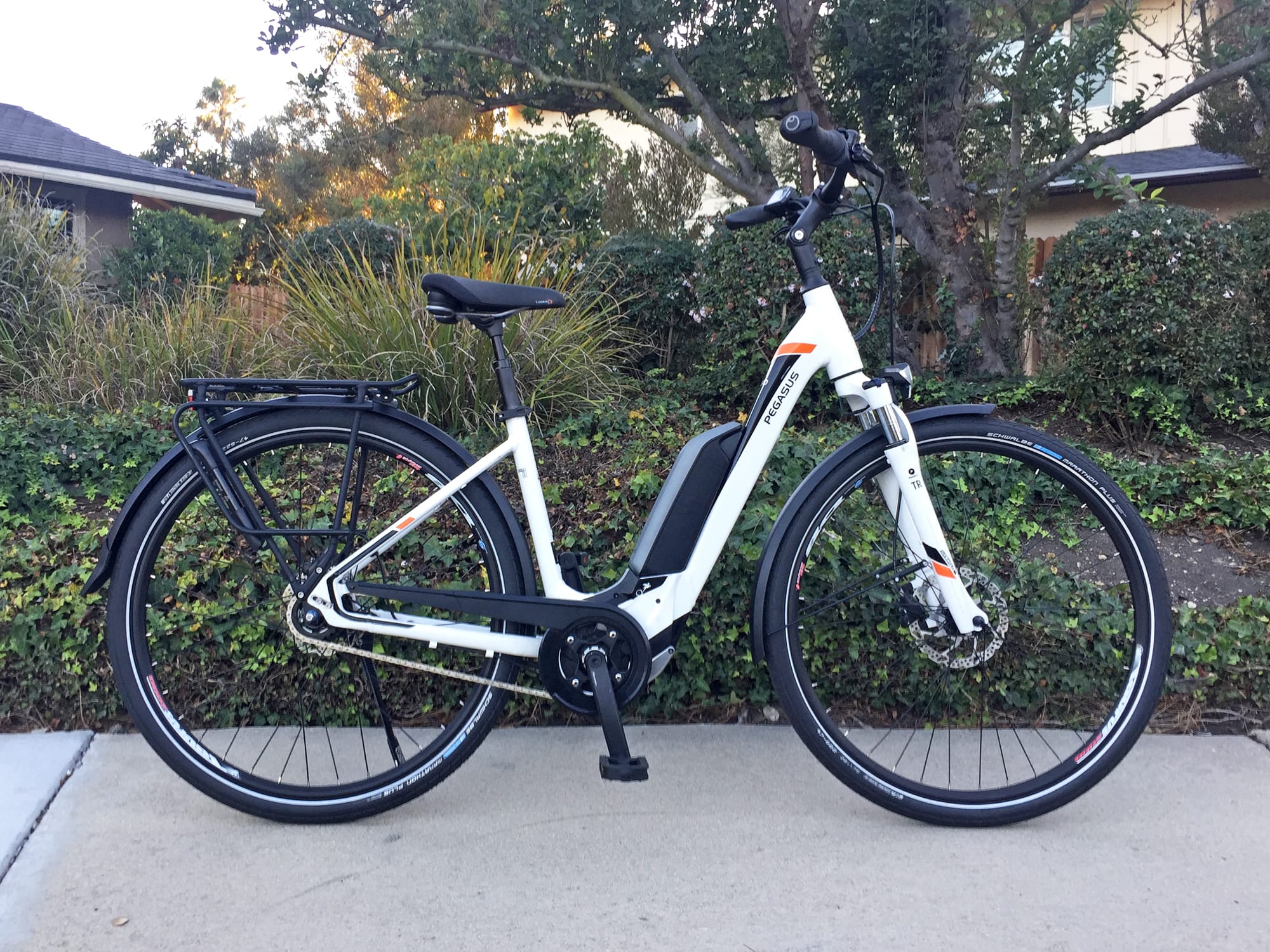
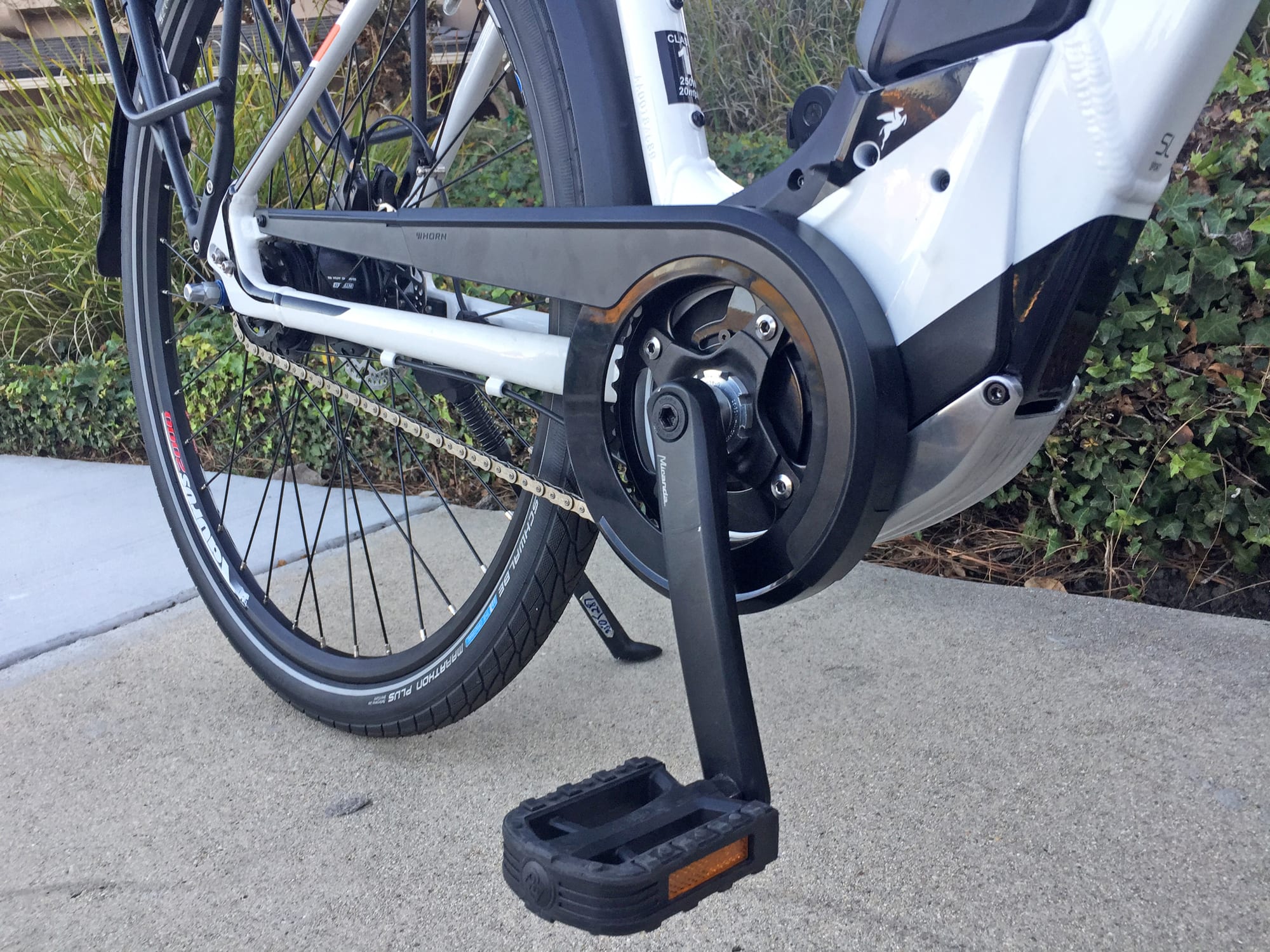
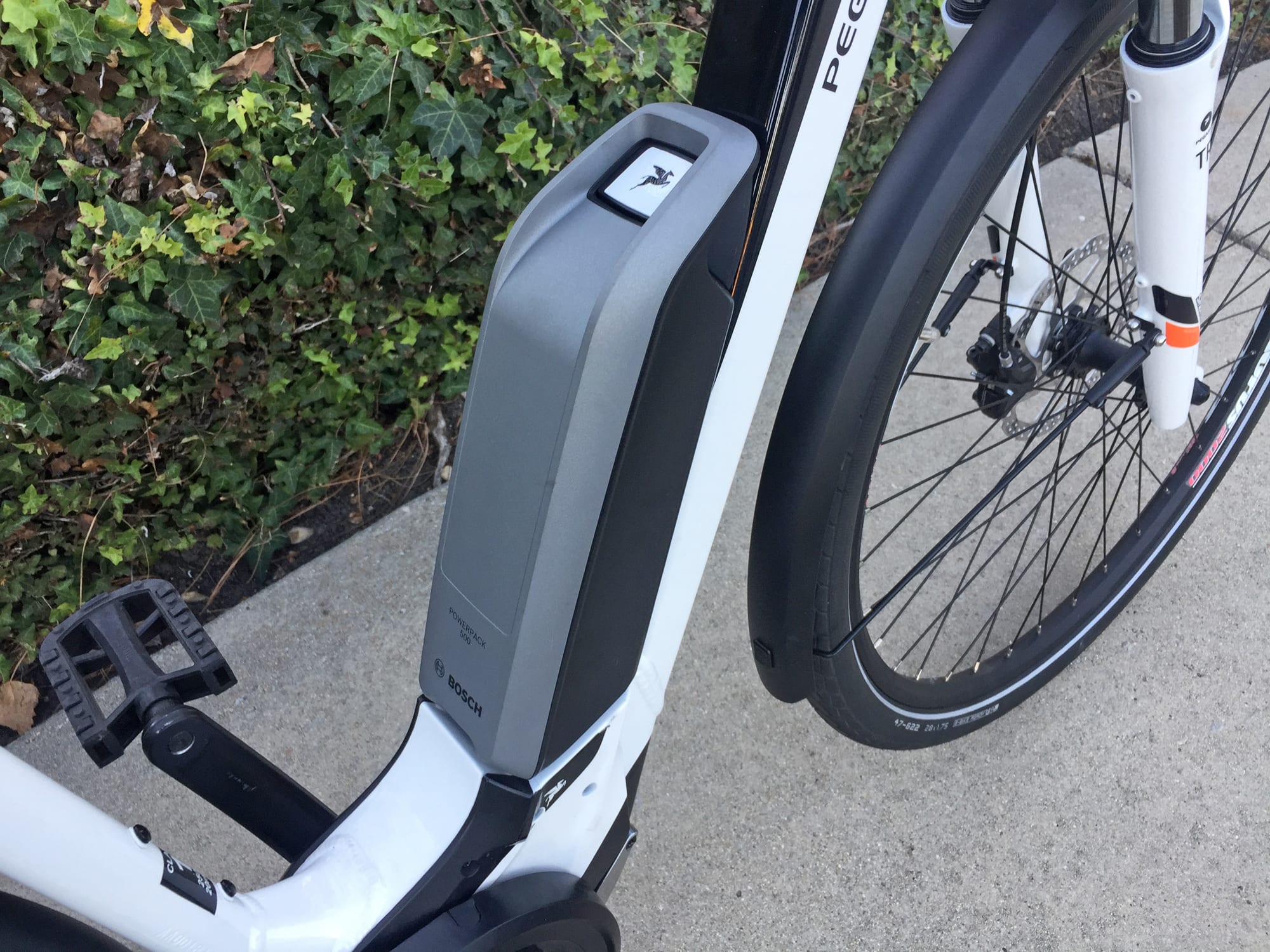
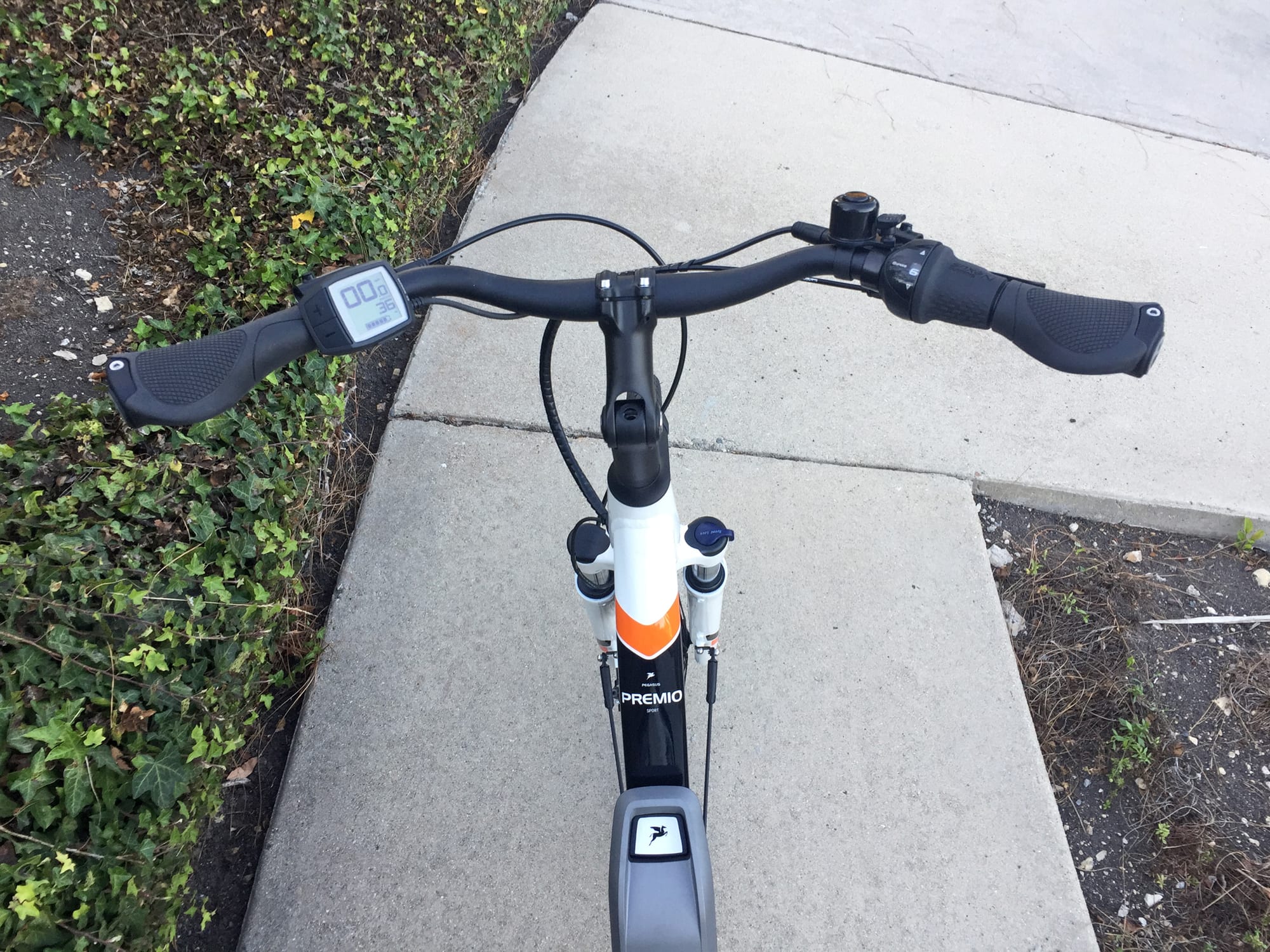
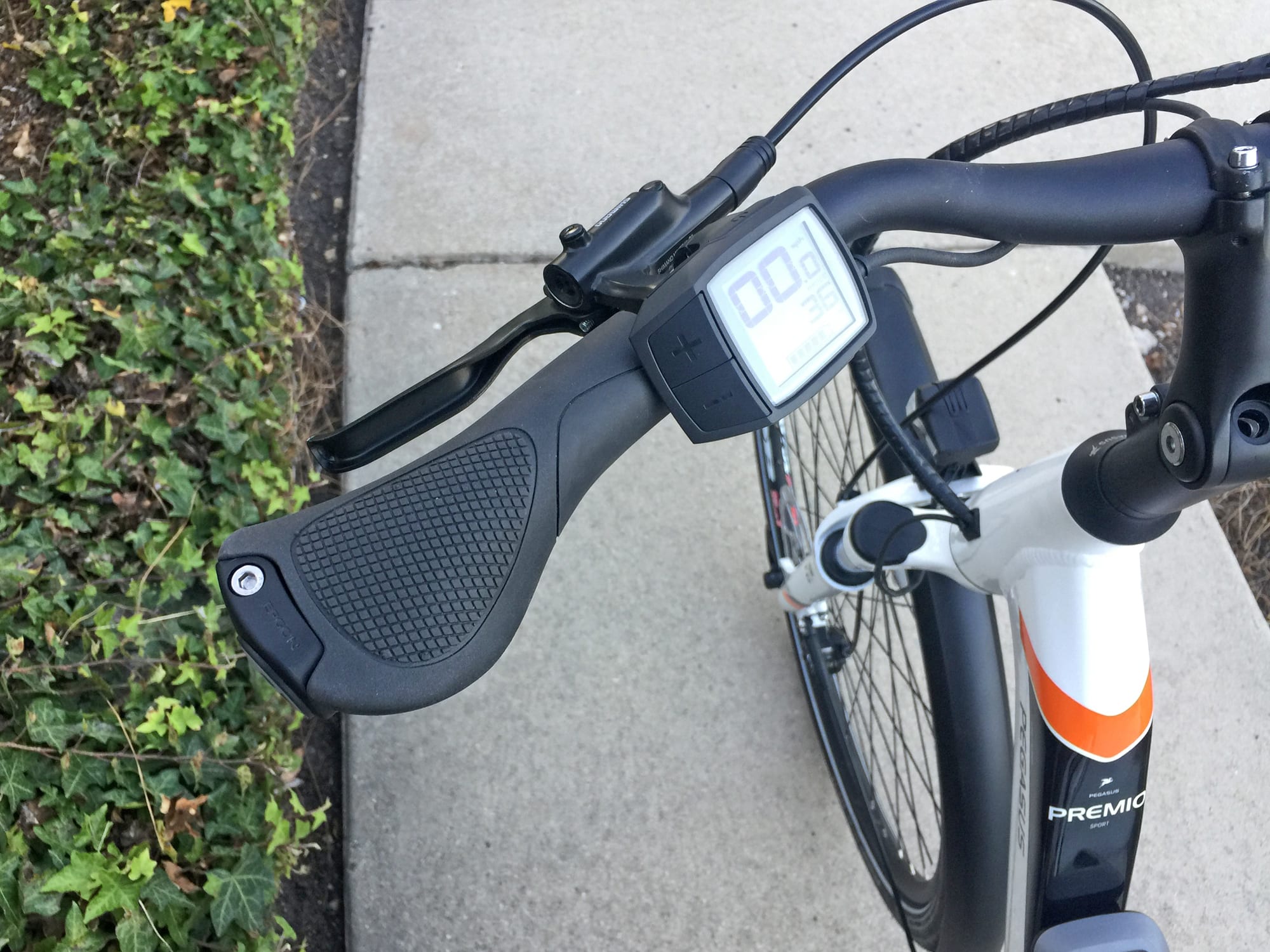

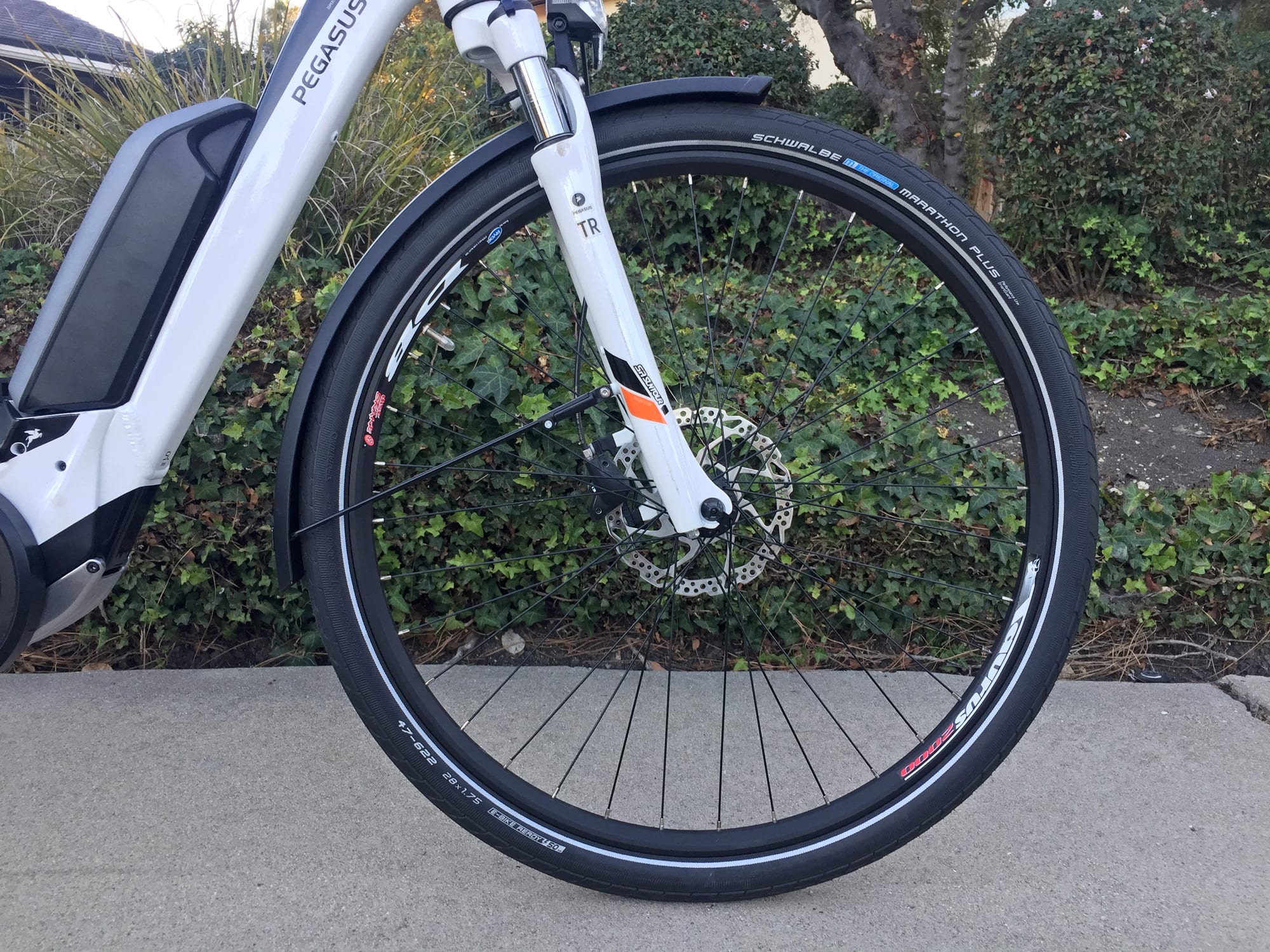
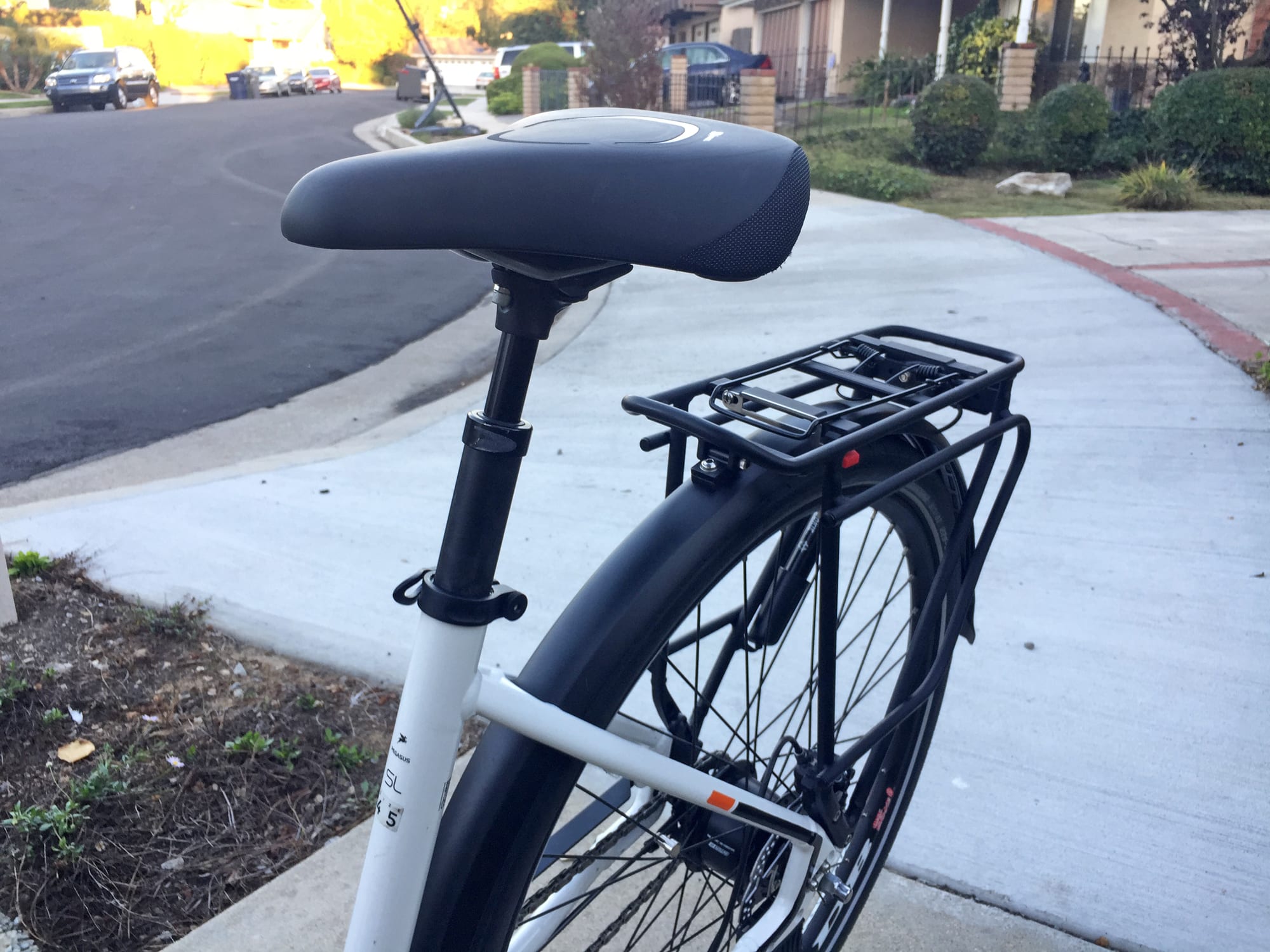
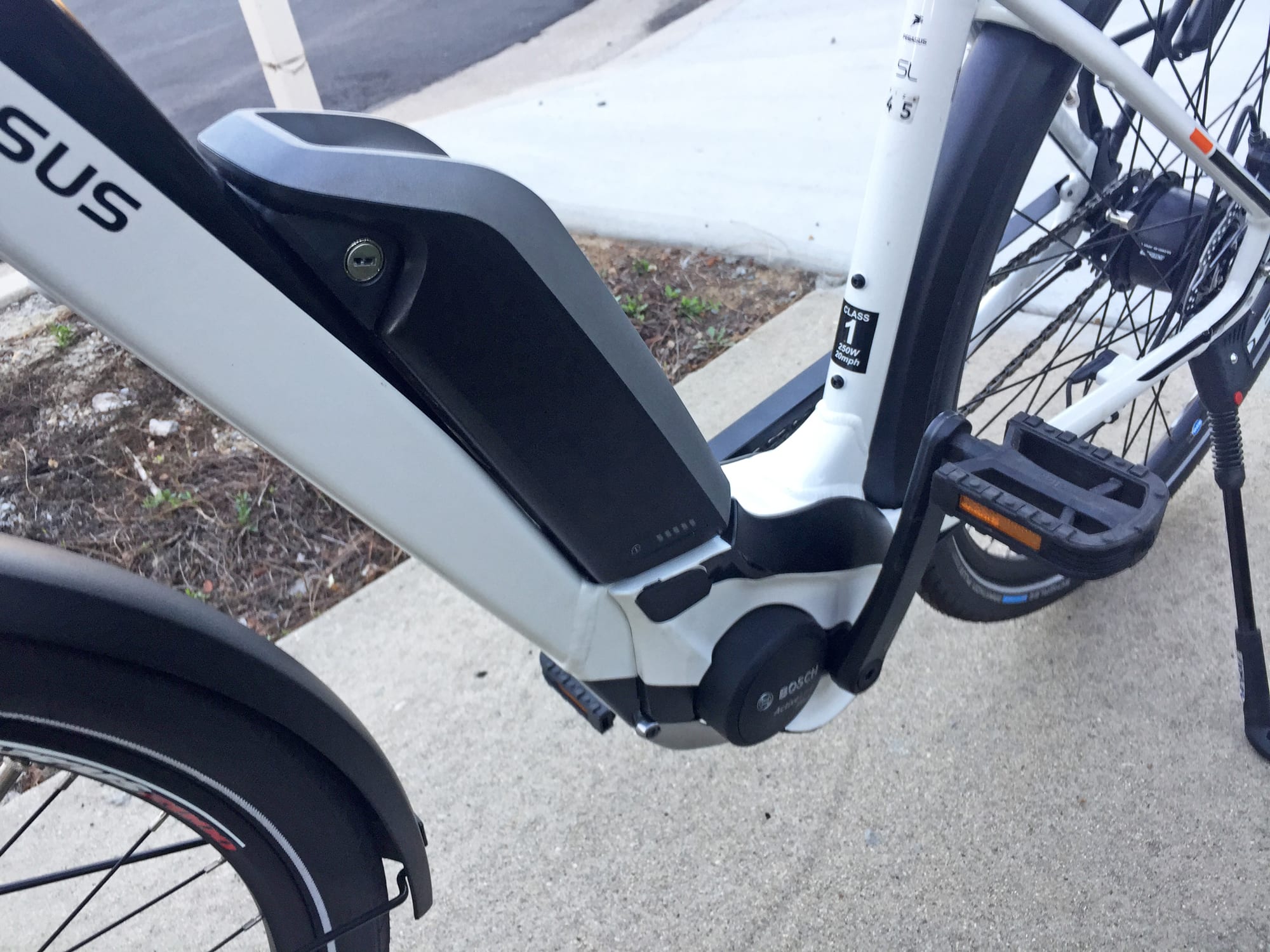
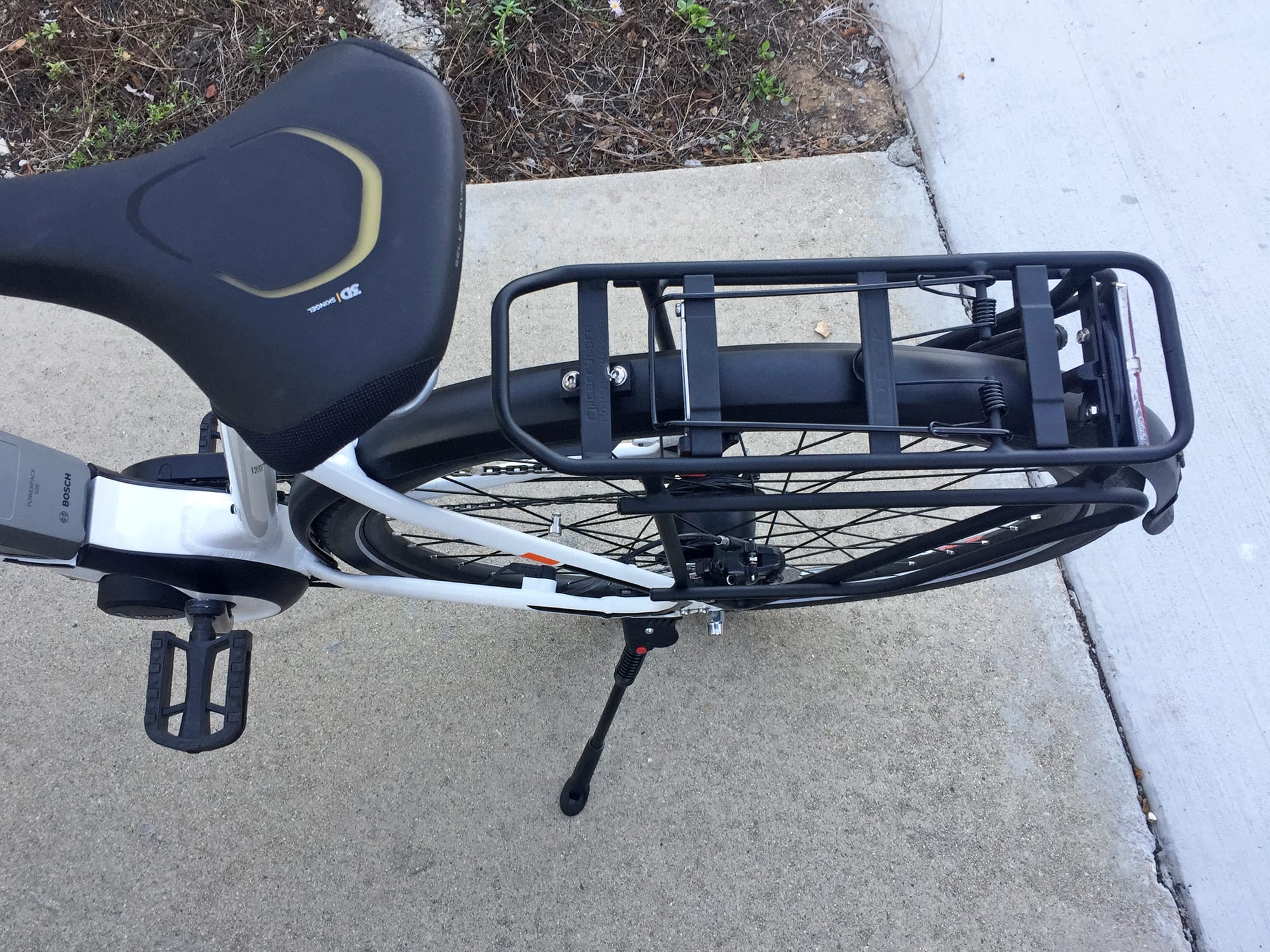




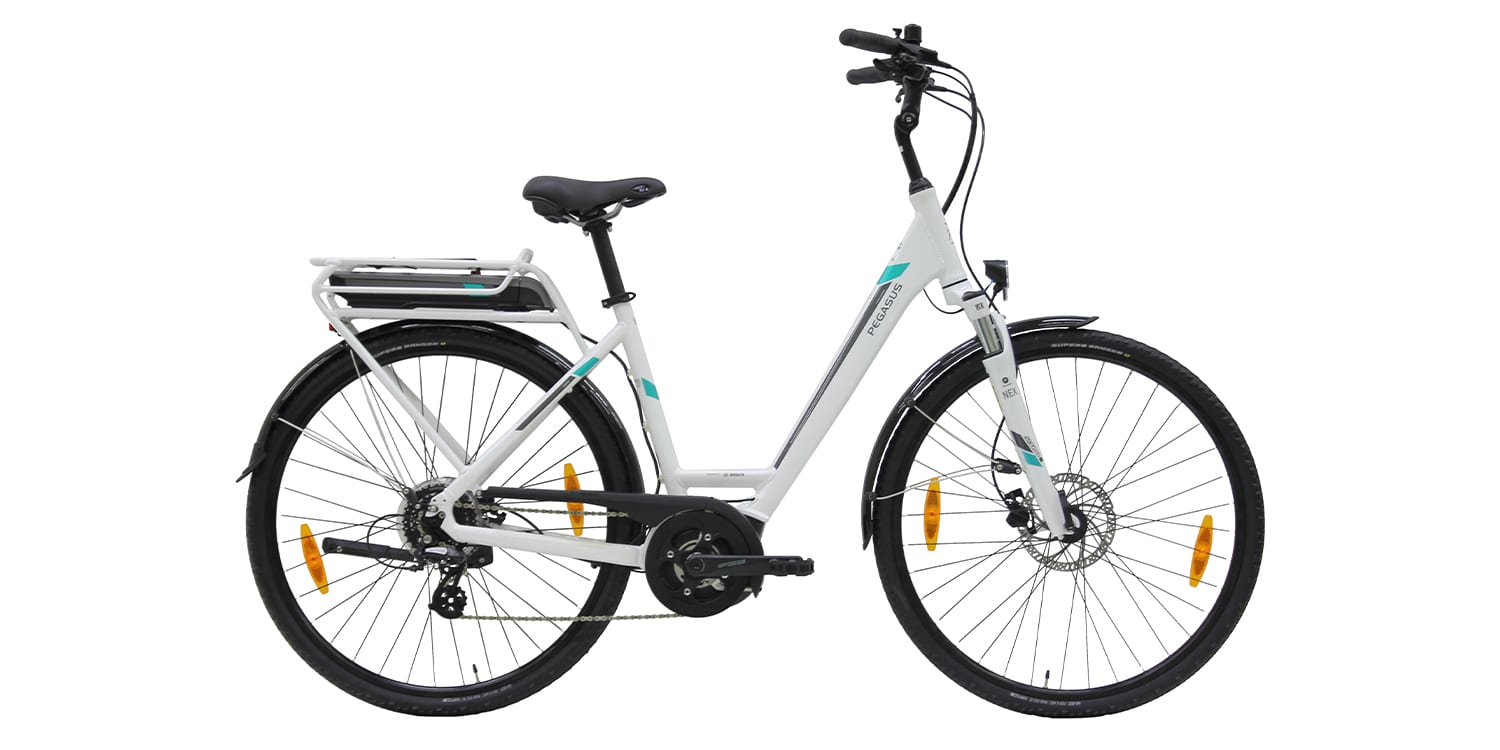
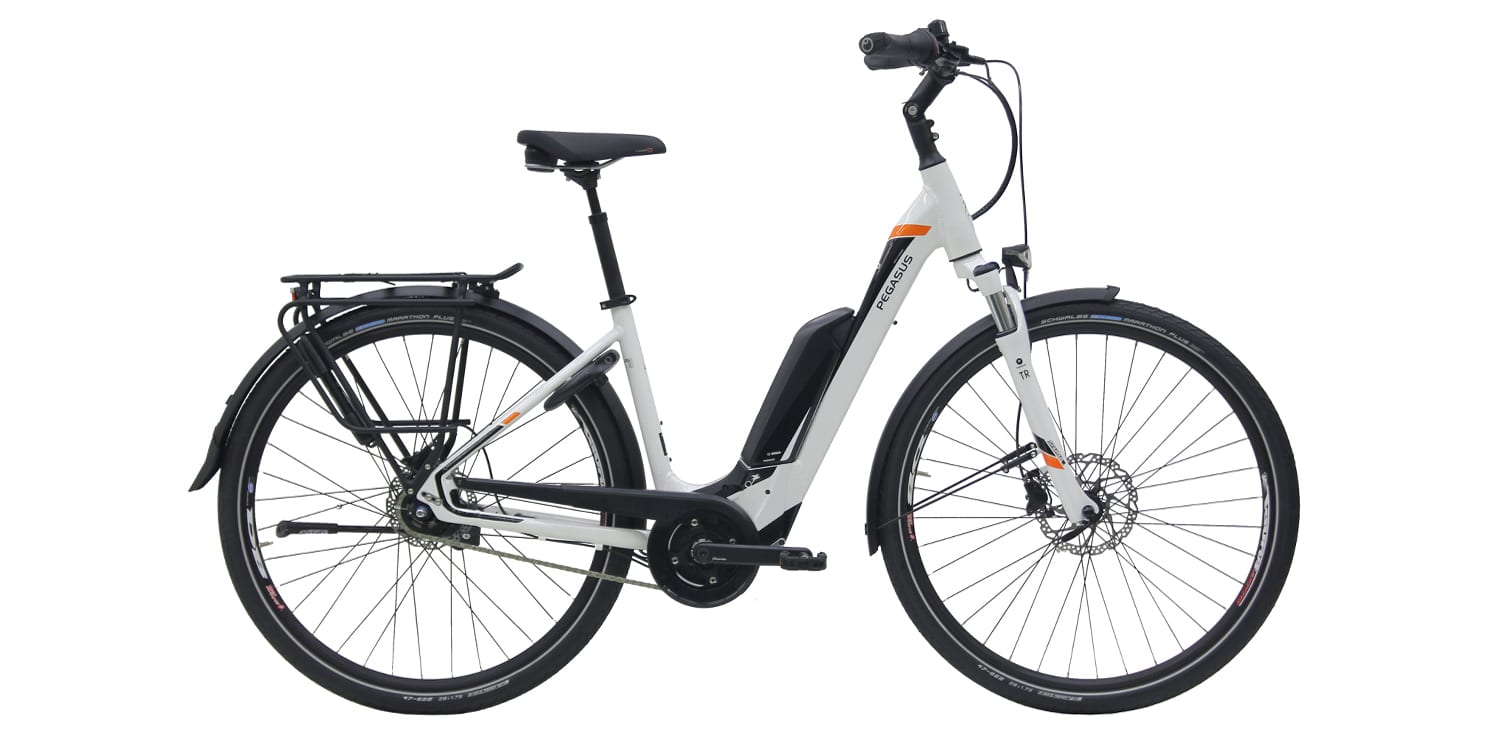
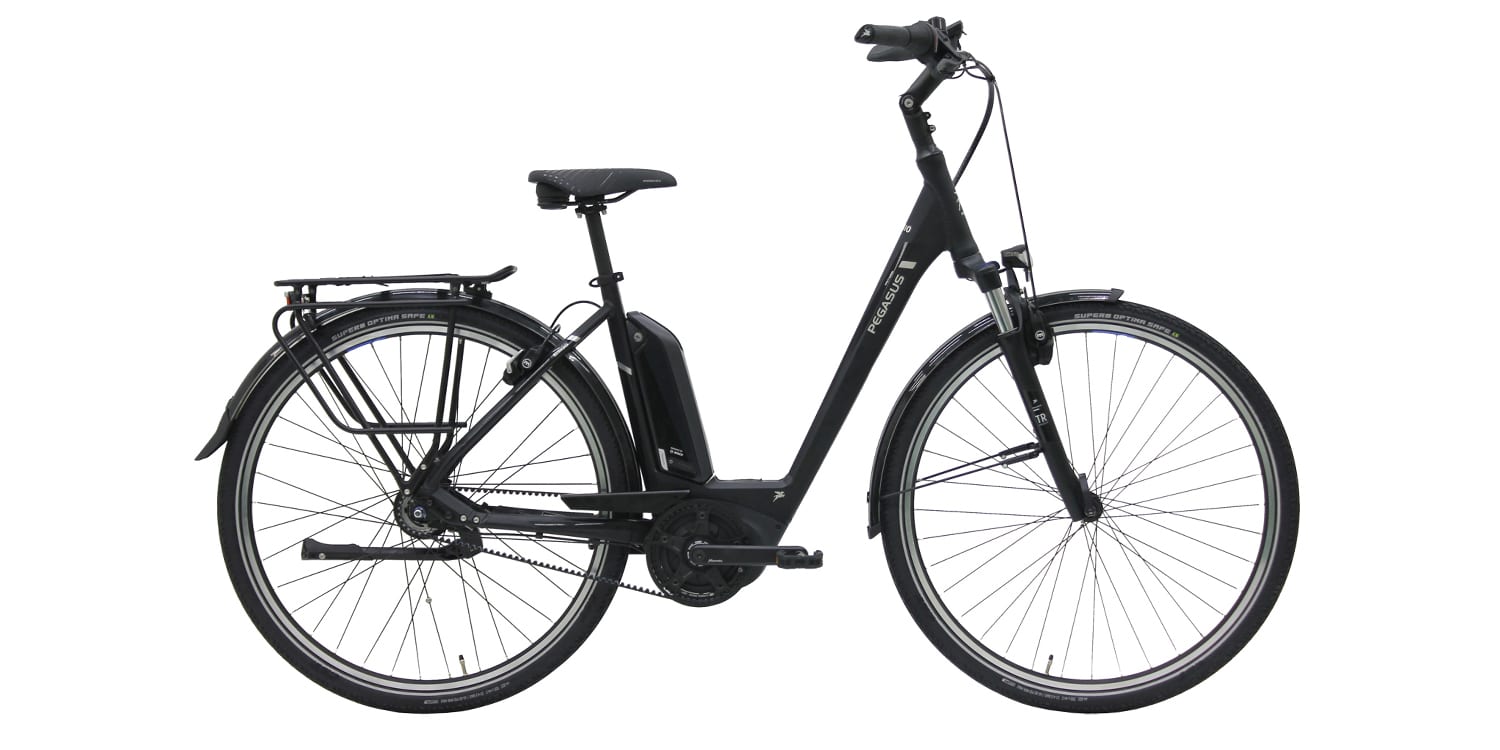
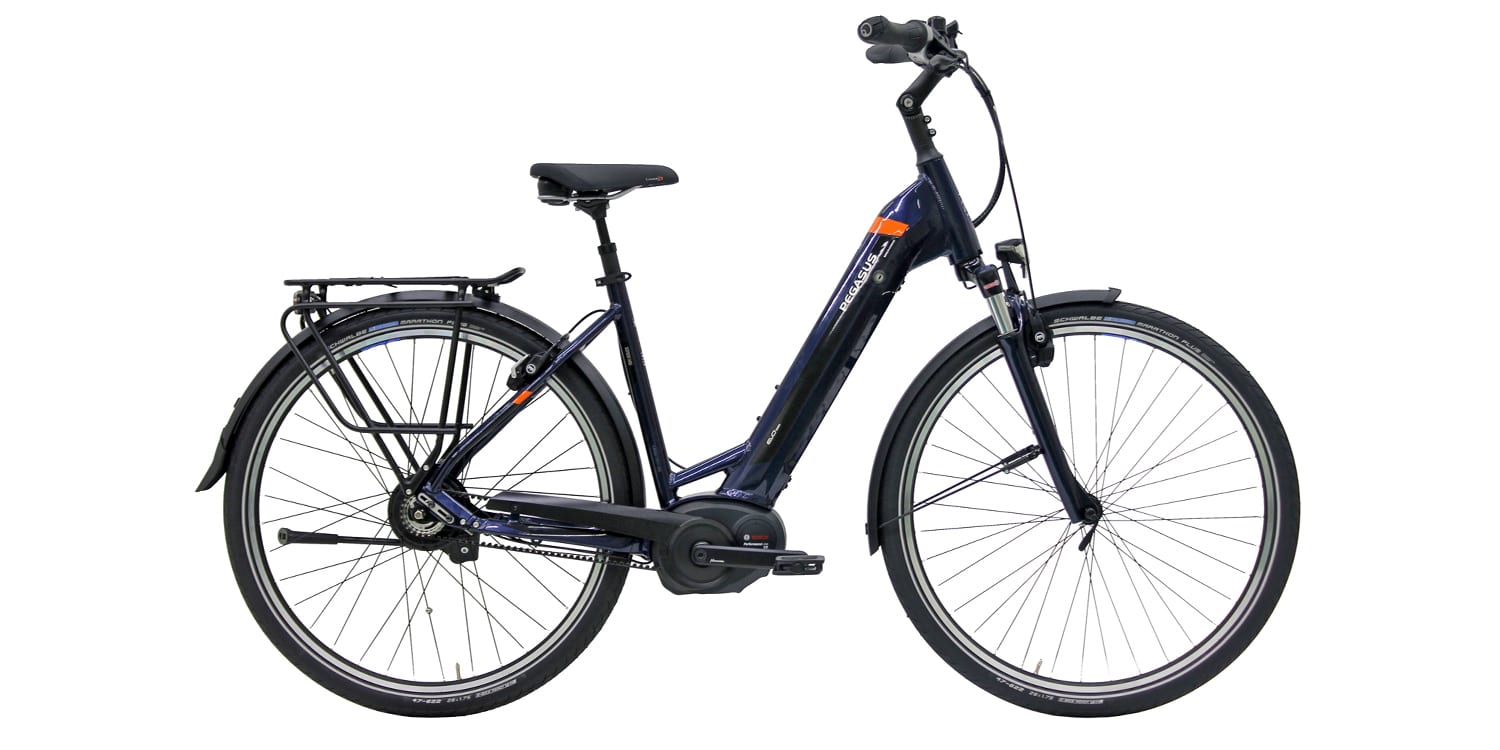
Reader Interactions